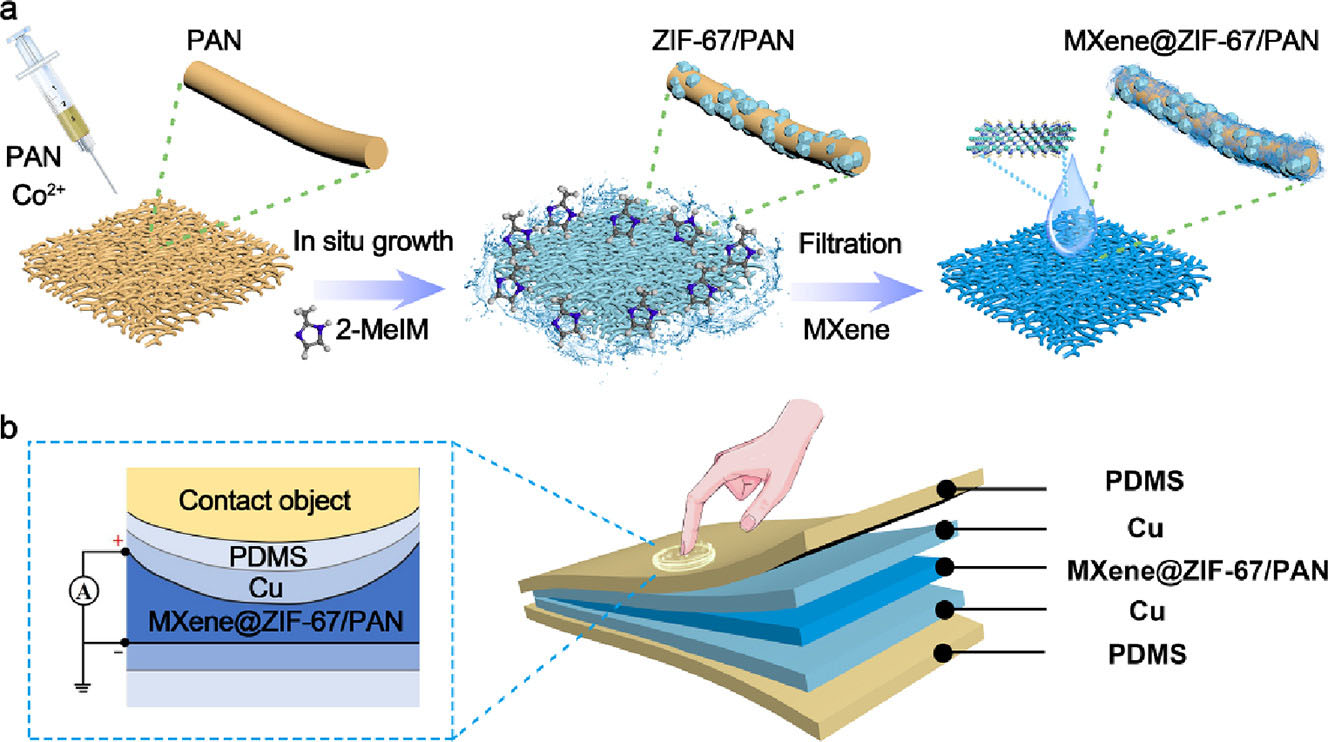
The rapid development of ultra-thin electronic skins (e-skins) – also called epidermal electronics or electronic tattoos – is opening new realms of possibility for flexible and stretchable monitoring gadgets that are wearable directly on the skin. These e-skin devices can be used for, among other things, prosthetics and rehabilitation, optogenetics, human-machine interfaces, human-computer interaction in gaming, and as diagnostic tools in the medical field (read more on this topic in « Lab-on-skin: Nanotechnology electronics for wearable health monitoring »).
E-skins require equally thin and flexible pressure sensors with a large response range and high sensitivity. The pressure-sensitive performance of devices can usually be evaluated via several basic characteristics, in terms of durability/stability, response/recovery rate, detection range, and sensitive response, which also provide a reference for the functional design of the sensor. Among these characteristics, detection range and sensitive response are two key factors affecting sensor property.
Researchers now report an MXene-based approach to designing the sensing material of e-skins to meet the above two needs.
As they report in ACS Applied Materials & Interfaces (« MXene/ZIF-67/polyacrylonitrile (PAN) Nanofiber Film for Ultra-sensitive Pressure Sensors »), they fabricated a flexible pressure sensor by sandwiching a conductive MXene/ZIF-67/PAN film between PDMS and copper electrodes.
Benefiting from the special rough and porous structure and 3D stable conductive network of the nanofiber film, the researchers’ sensor is able to simultaneously obtain a wide sensing range (0−100 kPa) and high sensitivity (62.8 kPa−1) and display a robust mechanical stability (over 10,000 cycles), and fast response/recovery time (10/8 ms).
To fabricate their e-skin sensor, the team first obtained flexible nanofiber films with rough structures via in situ embedding of metal-organic framework (MOF) particles on flexible PAN nanofibers.
Incorporating MXene nanosheets into these films resulted in a three-dimensional (3D) conductive network structure. As the authors point out, the unique rough structure of this MXene/ZIF-67/PAN film allows for better connection of the conductive pathways when force is applied, which contributes to the ultrahigh sensitive response and broad sensing range of the assembled flexible device.
The authors conclude their report by noting that the excellent sensing properties, coupled with encouraging benefits such as good biocompatibility and high flexibility, makes this sensor a competitive candidate for flexible and wearable health devices.
Découvrir